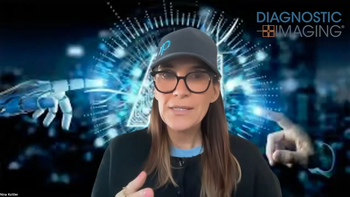
They Might Not Be Geniuses
How to play chess with the big wigs in your radiology group.
Once upon a time, I was a moderately-avid player of chess. It’s arguably the purest strategy-game out there; no random elements like rolling dice, for instance, and opponents always start out with exactly the same resources and play by the same rules.
After learning how the chess pieces move and basic methods of advancing one’s position, a player starts focusing on how to outmaneuver his opponent (while avoiding being outmaneuvered himself). One never really knows how the other player will respond to a given move, however, let alone what he might be scheming further down the line. It’s generally best to plan that the opposition will make the best moves possible.
This was where my ability and interest in the game broke down, because, as in real life, people don’t always do what’s in their best interest. This can occur because they’ve got other things going on and aren’t paying sufficient attention, especially when they’re distracted by emotional factors (greed, for instance, or pride). They might not be in the habit of thinking things out and strategizing in the first place, preferring to “wing it,” going with gut instinct. Or, commonly enough, they just aren’t all that bright…fascinating to behold when paired with an ego that convinces them they are the shrewdest guys in the room.
So, while you’ve figured out that adding a new office, MRI unit, or fellowship-trained associate is in your group’s best interest, and you can prove it seven ways from Sunday…one of your partners is fixated on how he thinks you cheated him four years ago, another doesn’t like the sound of any plan she didn’t devise herself, and a third is in opposition the moment he hears that his income might temporarily dip to fund the expansion.
It’s less frustrating and even potentially rewarding when you’re not as closely tied to the less-than-brilliant moves of those around you. Without having to share a business venture, a domicile, or even a shared social circle, you can just shrug and allow folks to create their own misfortune, maybe even watch it happen for your amusement. If you’re of a mind, you might even capitalize on it.[[{"type":"media","view_mode":"media_crop","fid":"28032","attributes":{"alt":"","class":"media-image media-image-right","id":"media_crop_342263202858","media_crop_h":"0","media_crop_image_style":"-1","media_crop_instance":"2803","media_crop_rotate":"0","media_crop_scale_h":"0","media_crop_scale_w":"0","media_crop_w":"0","media_crop_x":"0","media_crop_y":"0","style":"height: 125px; width: 166px; border-width: 0px; border-style: solid; margin: 1px; float: right;","title":" ","typeof":"foaf:Image"}}]]
Careful about that last bit…even if circumstances are such that it will give you no pangs of conscience. All but the thickest of the thick will eventually recognize their own bad moves, and it’s often easier to look around for others to blame rather than accept their own imperfections. If they can imagine a way in which their misstep resulted in your good fortune, in their eyes you may be painted as a con artist of the most despicable order. For that matter, you may inexplicably find yourself equally blamed if you originally recognized the blunderer’s error and tried to save him from it…especially if ego was the original reason for his acting like less than a genius in the first place. Your mere ongoing presence, in his eyes, may be a lasting “I told you so.”
Newsletter
Stay at the forefront of radiology with the Diagnostic Imaging newsletter, delivering the latest news, clinical insights, and imaging advancements for today’s radiologists.




























